We live in an age of disruptive technologies.
That statement could have been made well over a century ago, as centrally generated electricity initially was the disruptive technology becoming available to American homes and businesses. Today, however, the stakes arguably are much higher.
Electricity is the lifeblood of our digital, 21st-century society and economy. Many IAEI Magazine readers perform the day-to-day work that ensures that disruptive technologies such as 5G wireless, utility-scale solar and wind power, distributed rooftop solar, and energy storage technologies are deployed and integrated within the power grid in a safe and effective manner.
In turn, it is the mission and responsibility of the National Electrical Safety Code® (NESC®) to support this work with guidance, work rules, and best practices to protect your safety, ensure the public’s safety, and help establish the reliability and resiliency of the power grids that drive our lifestyles and economy. The NESC is updated and published every five years by the Institute of Electrical and Electronics Engineers Standards Association (IEEE SA) and approved by the American National Standards Institute (ANSI). The current edition is the 2017 edition, and we are in the revision process for the 2022 edition.
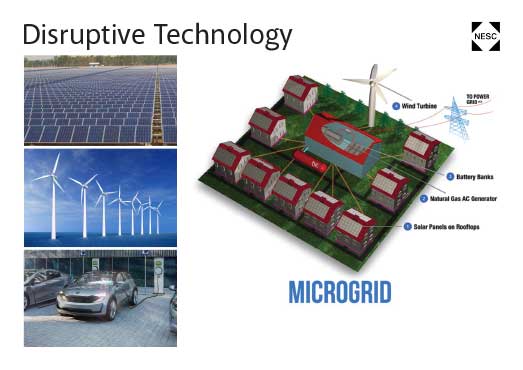
Thus, if you are an electrician, installer, contractor, inspector, power or communications utility, manufacturer, vendor, or related school — i.e., a professional in the power and communication-related industries — you benefit from the NESC. To this list, let’s add the public: approximately 330 million people in the United States. NESC membership and participation of the public in its processes directly benefit everyone’s safety and economic well-being. As noted in detail in sidebar 1, the purpose of the NESC “is the practical safeguarding of persons and utility facilities during the installation, operation, and maintenance of electric supply and communication facilities, under specified conditions.”
So as numerous issues of safety and best practices related to disruptive technologies are addressed and resolved, your insights and experience can help drive solutions. We offer an informative primer on the NESC’s value proposition, The National Electrical Safety Code: the Definitive Safety Standard for the National Electrical Grid and Communication Systems at https://ieee.app.box.com/v/NESC-Value.
An important distinction to keep in mind is that the NESC is applied from the generation substation to transmission and distribution facilities, i.e., the power delivery system up to the residential and commercial/industrial premises. The National Fire Protection Association (NFPA) publishes the National Electrical Code (NEC), which applies to wiring systems inside premises up to certain voltage levels. For example, the NEC addresses the 110 and 220 voltages familiar to us as home and business owners. The NESC typically addresses high-voltage transmissions systems down to the 7,000- and 12,000-volt distribution lines and also covers the 110- and 220-volt service feeds` to homes or businesses.
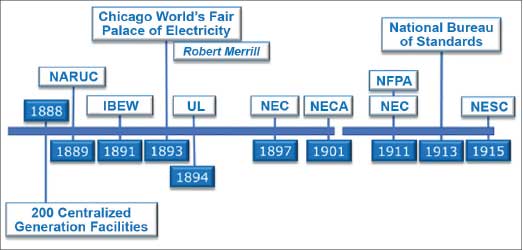
From a code enforcement perspective, the NESC differs substantially from the NEC rules that apply to the premises wiring in residential, commercial and industrial structures. The NESC is primarily applied by the nation’s electric and communication utilities from generation to the meter and is adopted by state regulatory commissions or legislatures for investor-owned utilities. The NEC primarily applies to installations of nonutility electrical equipment on the consumer side of the meter, such as in-building wiring. This code is enforced largely by local building and electrical inspectors, who are tasked with approving building electrical systems.
As we shall see, the advent of disruptive technologies has blurred the line between the jurisdiction of the two standards, and work remains to clarify each’s realm of responsibility.
Let’s review four examples of disruptive technologies and related issues that have made the NESC and its work more relevant to your safety, and public safety, today and in the years ahead.
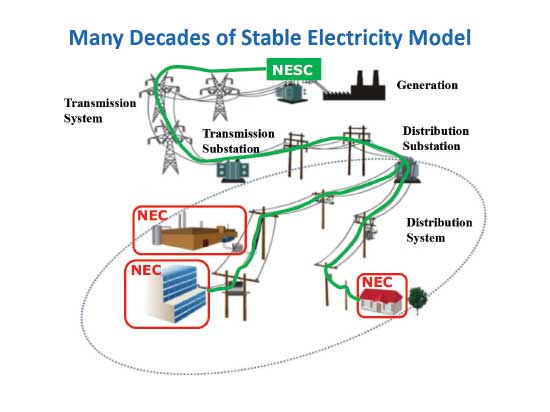
5G
The advent of 5G in the telecom realm has been hyped for its 10x jump in speed and capacity over 4G and its 5x reduction in signal latency. These qualities purportedly will offer us previously unimagined mobile services, including autonomous vehicles.
The catch is that 5G operates on very high-frequency bands necessary for high performance, which shortens the transmission range to less than 300 yards from each 5G antenna. Therefore, these antennae will need to be nearly ubiquitous, spaced perhaps 500 yards apart so that their coverage overlaps with other antennae. Further, 5G antennae need to be close to users to be most effective. Each telecom provider of 5G covering the same area currently needs to install its own separate network of proprietary antennae.
The 150,000,000 existing utility poles are potentially prime candidates for attachment of 4G and 5G small-cell antennae. Electric companies have legitimate safety concerns when it comes to installing antennae and other telecommunications equipment either above the supply space or within or below the communication space.
The NESC strength and loading criteria are used to evaluate how the additional equipment affects the total load on the pole, and clearance rules layout the spacing requirements between supply wires and equipment and telecommunications wireless antennae and equipment. A lineman must be qualified to work in the supply space when working on an antenna that is to be installed on top of the pole so either utility linemen need to be trained in installation and maintenance of the wireless equipment of the telecom workers need to be certified to work in the supply space. That issue is usually worked out on a local basis.
Electric utility companies write their own standards to determine where and how small cell wireless equipment can be installed on a pole. As a result, the standards vary significantly on several different factors, such as which poles can be candidates for small cell installations and what are the requirements for the application process. These differences have impeded the attachment and build-out process. But when you think of it, customers of the electric company not only need electricity but want to have high-speed wireless.
One organized effort in this direction is sponsored by the IEEE Standards Association Industry Connections. This Joint Use committee has members participating from all interested stakeholders in the high-speed wireless arena. The main goal is to increase the level of standardization within the attachment process and to improve efficiencies. The first work product is a white paper titled “Establishing Consistency in Joint Use Applications with 5G Wireless Facilities,” published in October 2019. The work is ongoing, and membership is open to all interested parties.
Reliability and resiliency
The NESC does not directly address power grid reliability and resiliency. However, the NESC’s electrical and structural safety criteria contribute to establishing the electrical and structural base levels of system reliability and resiliency.
These two concepts — reliability and resiliency — have become important in the power industry for different reasons, and the NESC continues to evolve as a result.
The focus on reliability – that is, keeping the power on during “blue sky” and “gray sky” days – was significantly increased in the computer age of the past several decades because businesses and individuals couldn’t abide power interruptions. A sudden power surge or outage could cause downtime and the loss of valuable data or completed work.
The focus on resiliency – that is, minimizing the number and duration of service interruptions in major weather events – dates more recently to Superstorm Sandy in the Northeast in 2012, when grids were physically overwhelmed by extreme weather, and massive outages occurred and persisted. Today, as a result, everyone in the utility business is concerned with how well their power network minimizes outages and how swiftly service can be restored following major events.
We’re discussing whether we should add language on reliability and resiliency to the NESC and, if so, whether that can be done in a useful and effective manner. These issues are currently under discussion at our subcommittee level. (See Figure 4 on NESC’s organizational structure.)
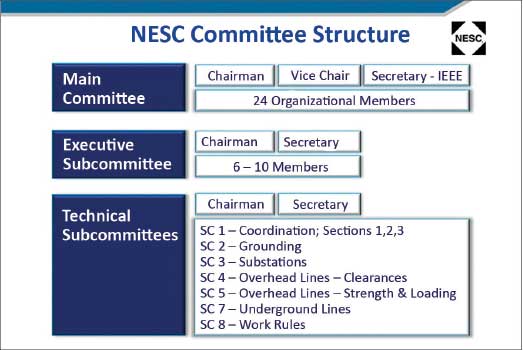
It’s important to keep in mind that resiliency isn’t just a matter of convenience for homeowners. Restoring power swiftly can save lives by enabling emergency responders to assist those impacted by the storm and by keeping hospitals, nursing homes, and other lifeline facilities running. Resiliency is also critical to our economy by keeping transportation and trade up and running, to cite two examples.
If readers have strong views on how these topics should be handled, we invite your participation in the NESC’s current revision process.
DER, Energy Storage, EVs
Even though residential rooftop solar installations are generation, the NESC granted that it makes sense for the NEC to have jurisdiction over those installations as the NEC resides over all other premises wiring as shown in Figure 5. The NESC still must address the various other forms of distributed energy resources (DER) that are being implemented. That includes how we address small natural gas generators, uninterrupted power sources, electric vehicles (EVs), energy storage – you name it. We’ve begun this process by creating new, more discerning definitions for generation that will differentiate, for example, between a traditional generation station and a substation or various types of DER. This process is driving the creation of a new subcommittee to ensure we adequately address all currently known types of DER.
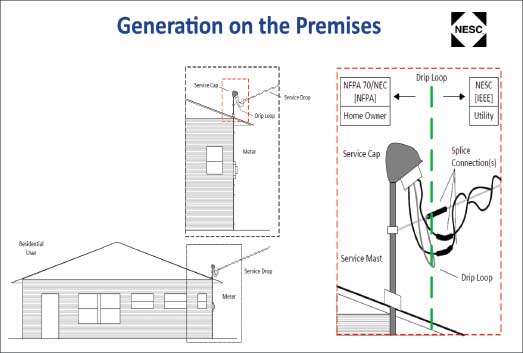
It’s worth mentioning that the NESC has already made progress on energy storage, which can be batteries in substations like those also used in EVs or on-premise at homes and businesses. Storing electricity – beyond the role of water stored in reservoirs for potential hydropower – has always been the holy grail for everyone in the electric power business.
Electricity, by its nature — aside from low-voltage, temporary storage in portable batteries — requires that it be used as it is generated and distributed. Now, energy storage can be achieved in EVs, in Battery Energy Storage (BES) devices at home and neighborhood levels and in other applications. The NESC has had rules for the backup batteries in substations and grid control centers and is updating those rules to include the newest battery technologies. The upcoming NESC edition will provide safety rules for the new technologies of both battery backup and energy storage for the grid.
Conclusion
Obviously, as chair of the NESC, I bring a certain passion to the recognition of electric power and telecommunications-related issues that require attention and resolution to promote the safety of workers and the public, which in turn supports an electricity- and communication-dependent society and economy. While the NESC is specific to the United States, other countries around the world either informally adopt the NESC or use it as a reference point for their own rules. Our commitment on the committee is tocontinue the tradition of keeping up with new technologies and ensuring that the NESC stays relevant to the new aspects of this fast-changing world.
I invite anyone with a stake in how these issues are addressed by the NESC to join our efforts.














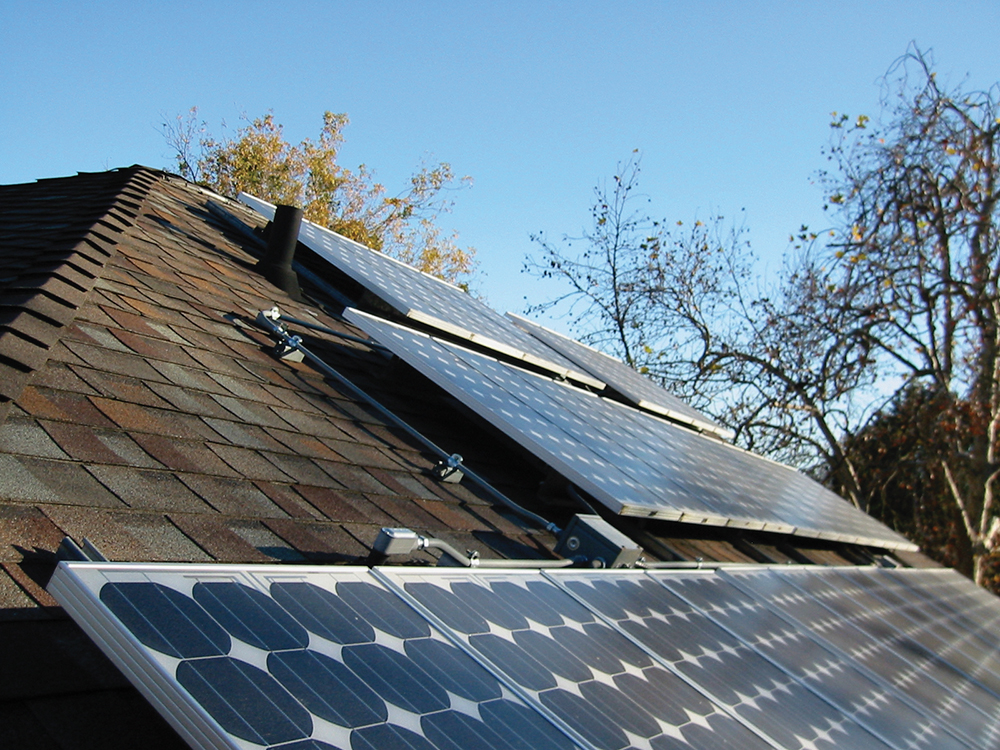
Find Us on Socials